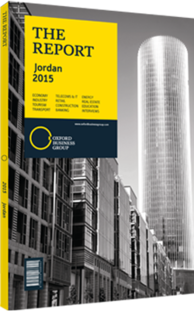A new bus system will cut travel times in and around Amman
Renewed work on a bus rapid transit (BRT) system in Amman marks a positive development for Jordan, promising improved connectivity for the capital. A burgeoning national population, estimated at nearly 7m and expected to reach 8.5m by 2025, is putting growing pressure on transport infrastructure against a backdrop of rapid urbanisation. As urban centres develop, the government will be hoping that BRT projects help to alleviate the strain of getting around Amman and other hubs, reduce congestion, curb costs and make inter- and intra-city travel easier.
Urban Demands
Amman is the centre point of Jordan’s rapid urbanisation and population boom. At the World Economic Forum on the Middle East and North Africa in May 2015, King Abdullah II ibn Al Hussein highlighted the importance of urban development and transport infrastructure, and the opportunities for public-private partnerships to bring such projects to fruition.
High on the list of urban challenges is traffic congestion around major cities. “Motorists lose a lot of money on fuel consumed while their cars are stranded in traffic,” Ayman Smadi, executive director of transport and traffic at the Greater Amman Municipality (GAM), told local media. Traffic jams can cost up to JD1bn ($1.4bn) per year in wasted time and fuel, according to GAM.
Stop-Start
The BRT network, which falls under the purview of GAM, is expected to play a key role in addressing congestion, while providing stimulus to the construction industry.
Progress on the initial BRT line, which will operate in Amman, has been stop-start, with construction beginning in 2010 before being suspended in 2011 amid concerns over feasibility and funding. Following a reassessment, the government relaunched the plans in 2013. The project recently received renewed impetus in the form of an additional $152m in funding from the French Development Agency, France’s department for promoting sustainable development abroad. The financial cooperation agreement signed in June 2015 paved the way for construction to resume, with work now under way on a 4-km section of Princess Basma Street. Construction is scheduled to take 30 months, with responsibility for infrastructure and buses to be divided between GAM and the private sector, respectively.
Once finished, Amman’s BRT system will have a fleet of 150 high-capacity buses, shuttling as many as 200,000 passengers daily through a 33-km network, 25 km of which will be dedicated bus lanes. Separating buses from the main body of traffic is particularly useful during rush hour, and has been successful in other major cities.
Improving Commutes
Work is also gaining pace on a second BRT line, which will link Amman with the satellite city of Zarqa, located 22 km east of the capital. Zarqa, which has a population of close to 1m, is the kingdom’s third-largest city and a major commuter hub for Amman, with some 100,000 passengers travelling between the two cities each day, according to Ministry of Transport estimates. The authorities are aiming to start work on the project in 2016, with a JD110m ($154.8m) tender for construction expected in the coming months, Lina Shbeeb, the former minister of transport, told media in October 2015.
Financing from regional sources, including a GCC grant awarded through the Kuwait Development Fund, is set to provide JD100m ($140.7m) of the project’s costs, according to Marwan Hmoud, director-general of the Land Transport Regulatory Commission. Once complete, the AmmanZarqa BRT line could reduce commute times to as little as 23 minutes in each direction, with buses arriving every 70 seconds at peak travel times.
You have reached the limit of premium articles you can view for free.
Choose from the options below to purchase print or digital editions of our Reports. You can also purchase a website subscription giving you unlimited access to all of our Reports online for 12 months.
If you have already purchased this Report or have a website subscription, please login to continue.

